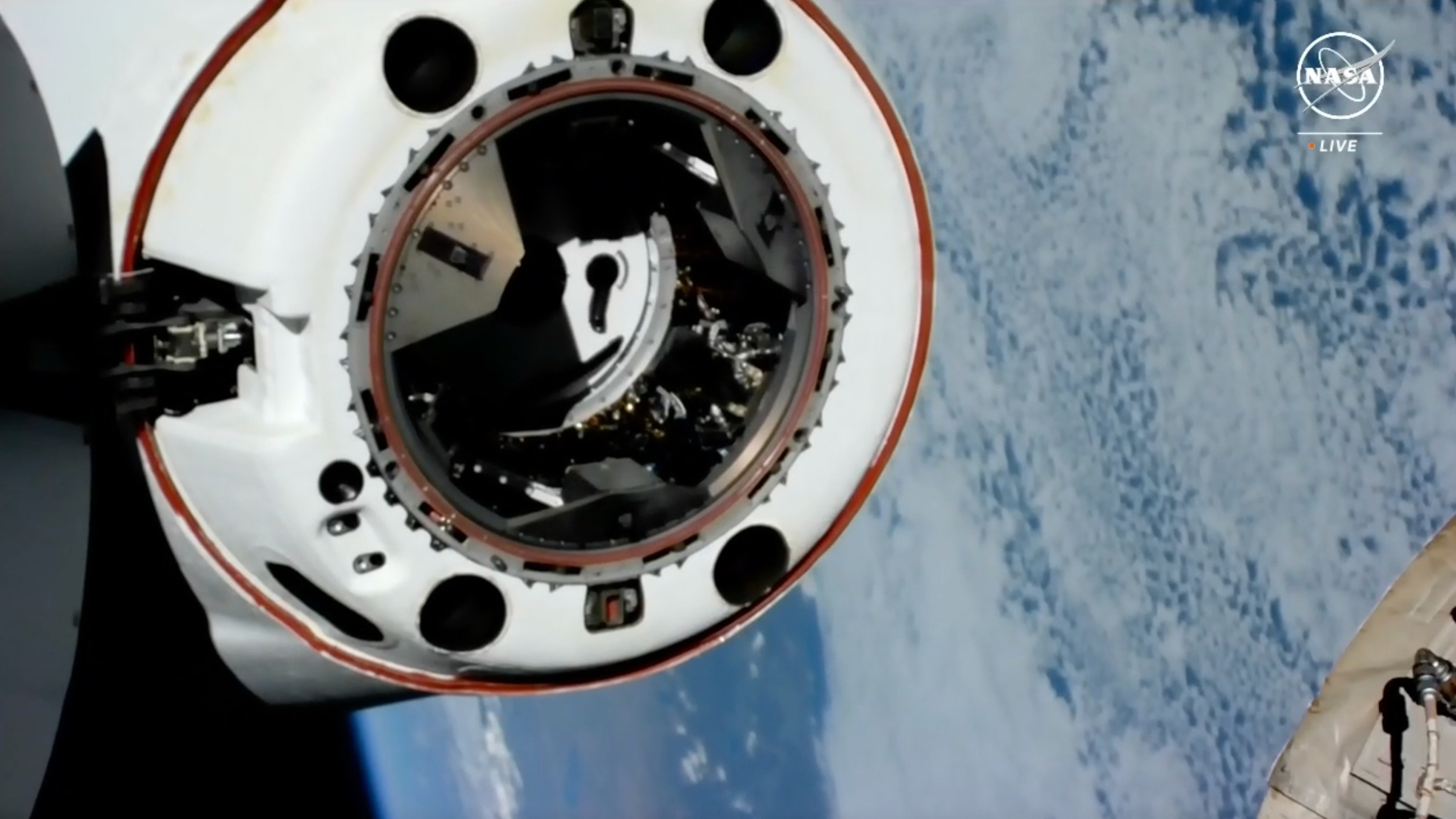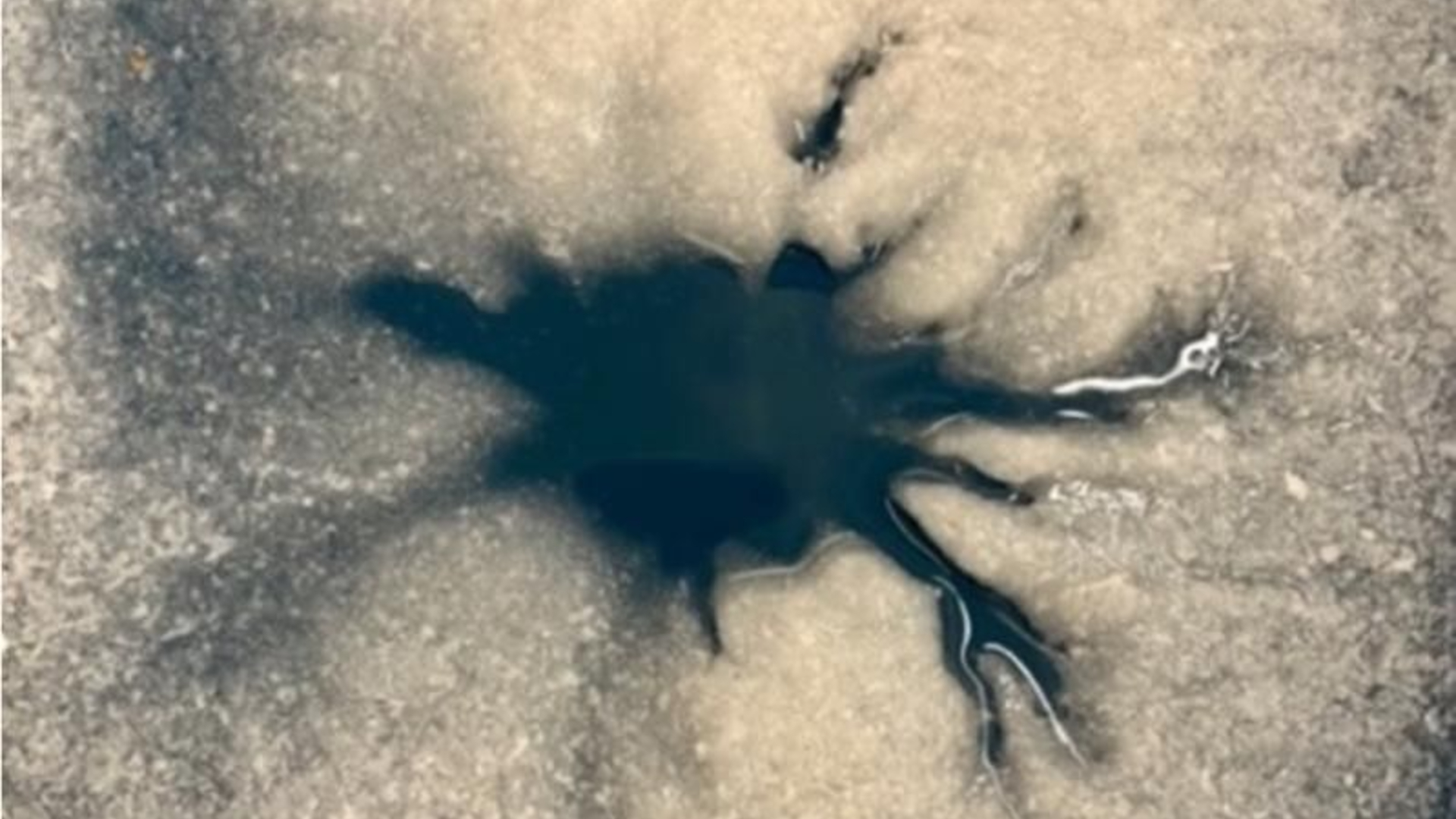SpaceX Dragon cargo capsule returns to Earth from ISS
A SpaceX cargo ship laden with science has returned to Earth.
SpaceX's robotic Dragon spacecraft undocked from the International Space Station (ISS) on Thursday (Dec. 21) at 5:05 p.m. EST (2205 GMT), as the two spacecraft were flying over the southwest coast of Chile.
Dragon then splashed down off the coast of Tallahassee, Florida, around 12:30 p.m. EST (1730 GMT) on Friday (Dec. 22) as planned, SpaceX confirmed via X (formerly known as Twitter).
Thursday's departure was originally scheduled for Dec. 14, but it was delayed repeatedly due to bad weather in the splashdown zone.
Related: SpaceX Dragon cargo ship docks at ISS with laser experiment and more (video)

The CRS-29 Dragon craft arrived at the space station on Nov. 11 carrying 6,500 pounds (nearly 3,000 kilograms) of supplies for ISS astronauts, along with a laser experiment. (CRS stands for "Commercial Resupply Services," and this is the 29th such mission SpaceX has flown to the ISS for NASA.)
Dragon brought home to Earth about 3,500 pounds (1,588 kg) of science and hardware, NASA officials wrote in a blog post last week. Also inside Dragon are cargo bags, bearing hardware and some trash.
Breaking space news, the latest updates on rocket launches, skywatching events and more!
While Dragon isn't the only cargo ship for ISS activities, it is unique among the set in that it is designed to survive the fiery re-entry into Earth's atmosphere. This capability allows researchers to retrieve science samples that require refrigeration, or to receive hardware when it is unneeded or requires repairs for shipment back to space.
Two Russian cargo ships, Progress 85 and 86, are also docked to the space station right now, alongside Northrop Grumman's Cygnus-19 spacecraft. The other currently docked ISS ships are for crew: The Crew-7 SpaceX Dragon spacecraft designed to carry four astronauts, and the Russian Soyuz MS-24 with three seats on board for crew.
Editor's note: This story was updated at 5:20 p.m. EST on Dec. 21 with news of successful undocking, then again at 1:10 p.m. EST on Dec. 22 with news of splashdown.

Elizabeth Howell (she/her), Ph.D., was a staff writer in the spaceflight channel between 2022 and 2024 specializing in Canadian space news. She was contributing writer for Space.com for 10 years from 2012 to 2024. Elizabeth's reporting includes multiple exclusives with the White House, leading world coverage about a lost-and-found space tomato on the International Space Station, witnessing five human spaceflight launches on two continents, flying parabolic, working inside a spacesuit, and participating in a simulated Mars mission. Her latest book, "Why Am I Taller?" (ECW Press, 2022) is co-written with astronaut Dave Williams.
